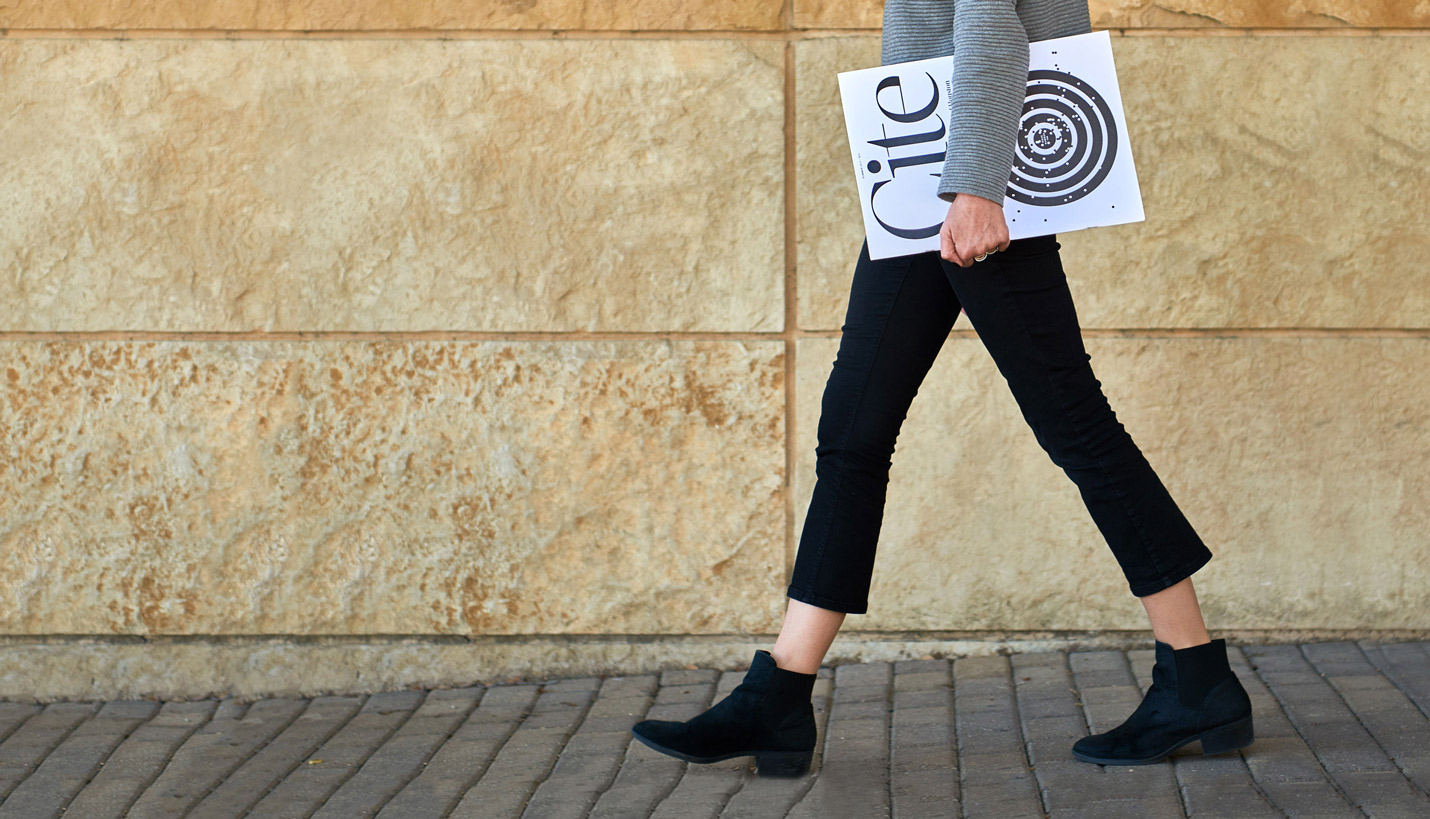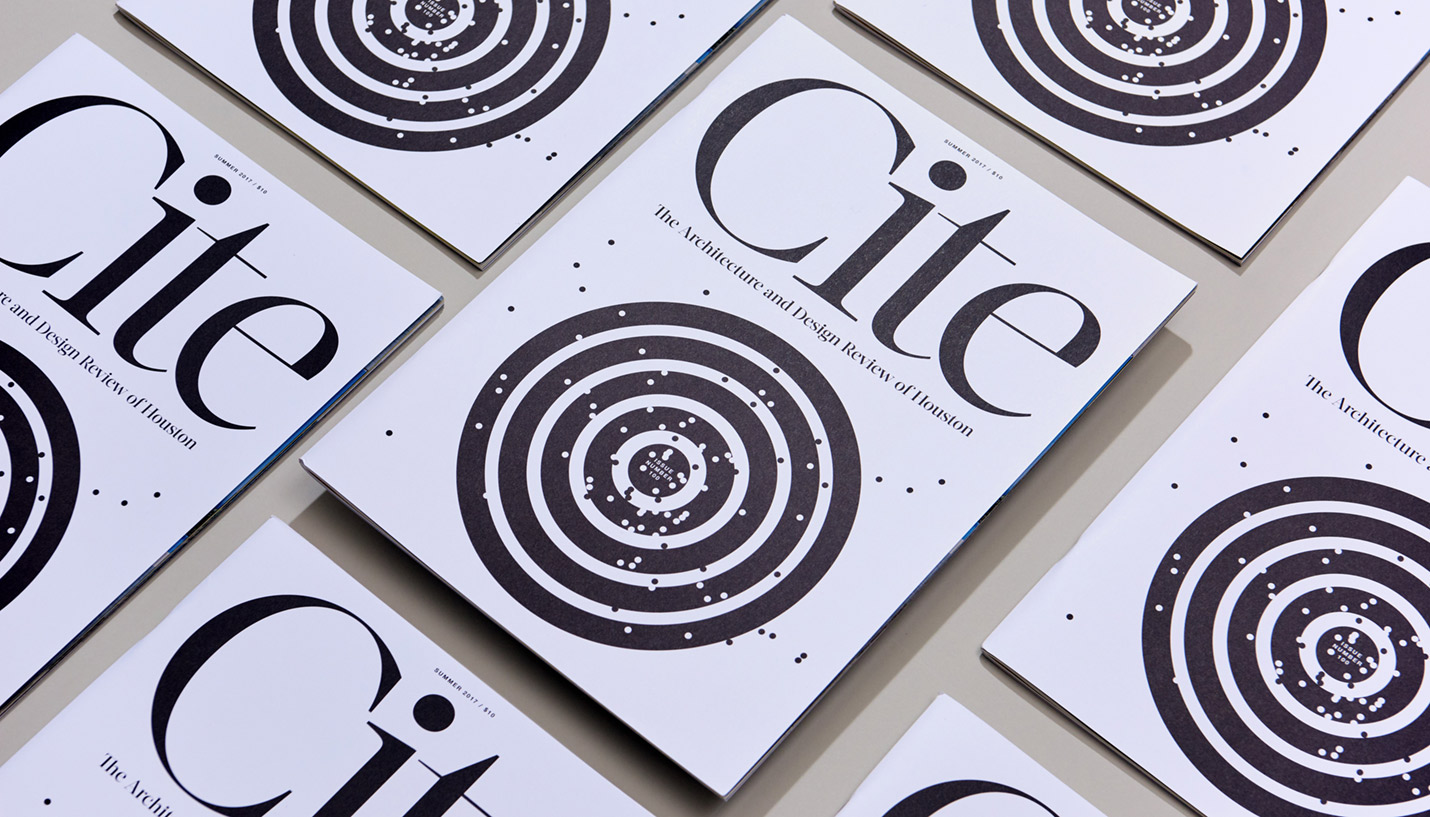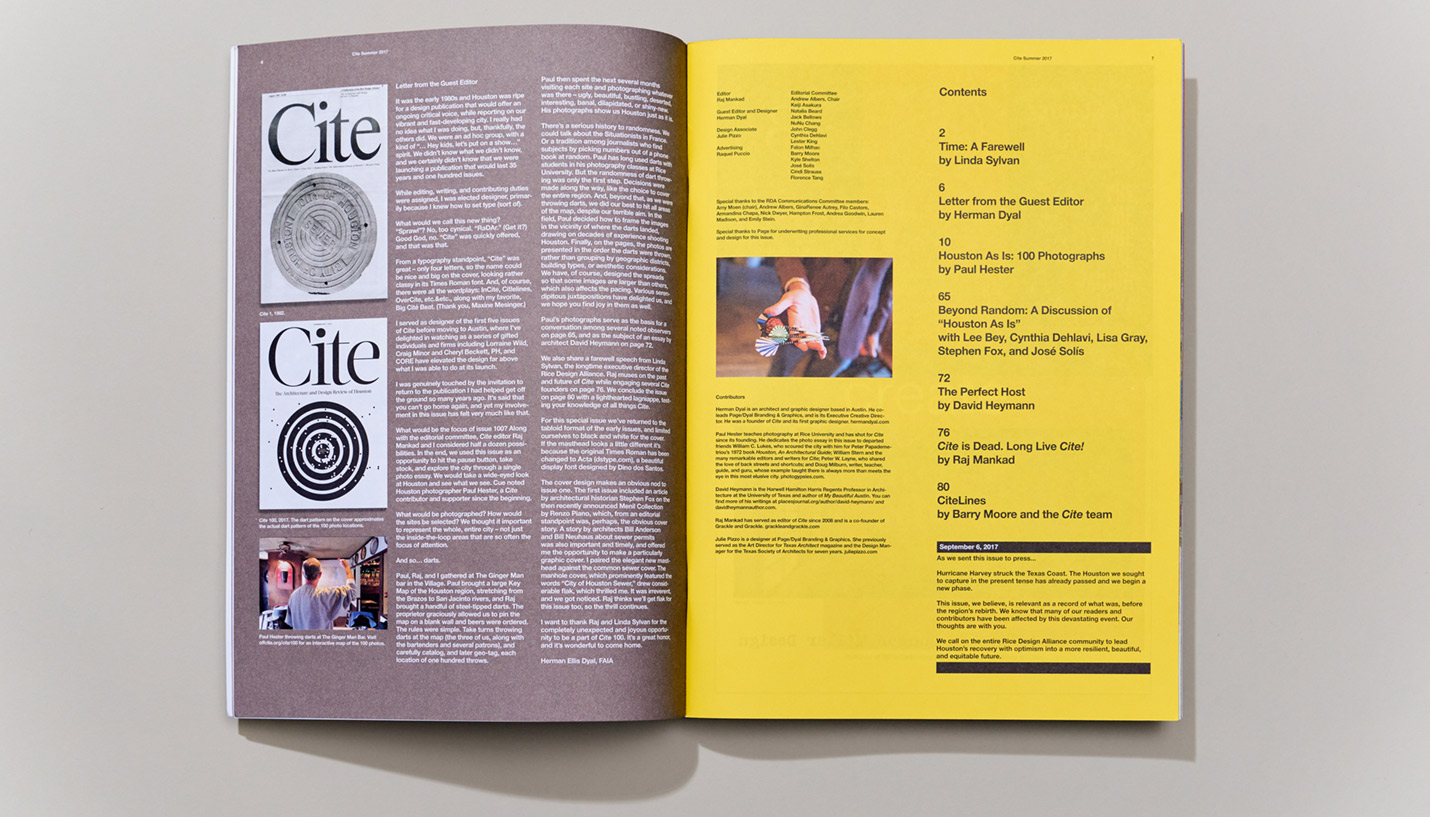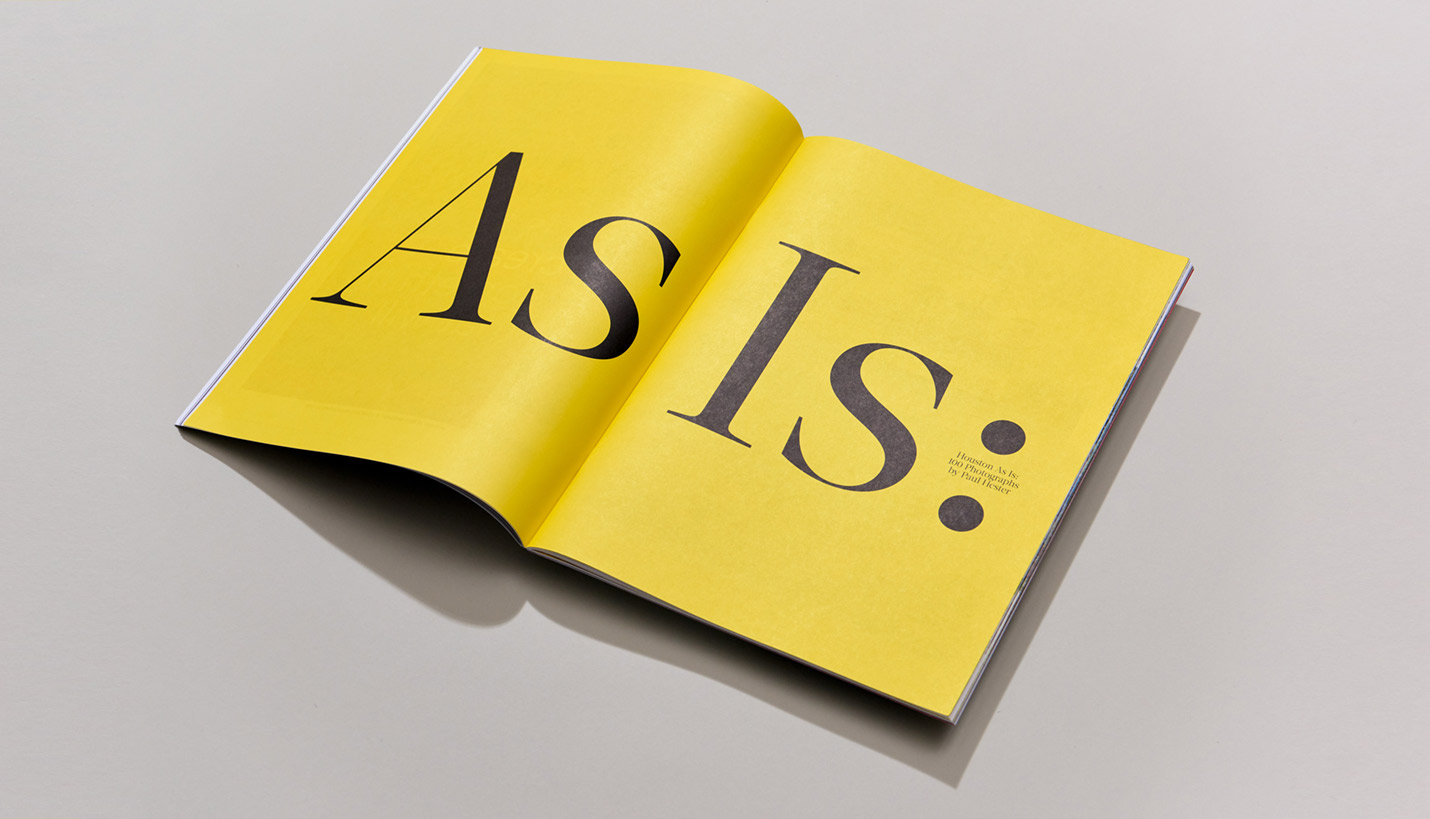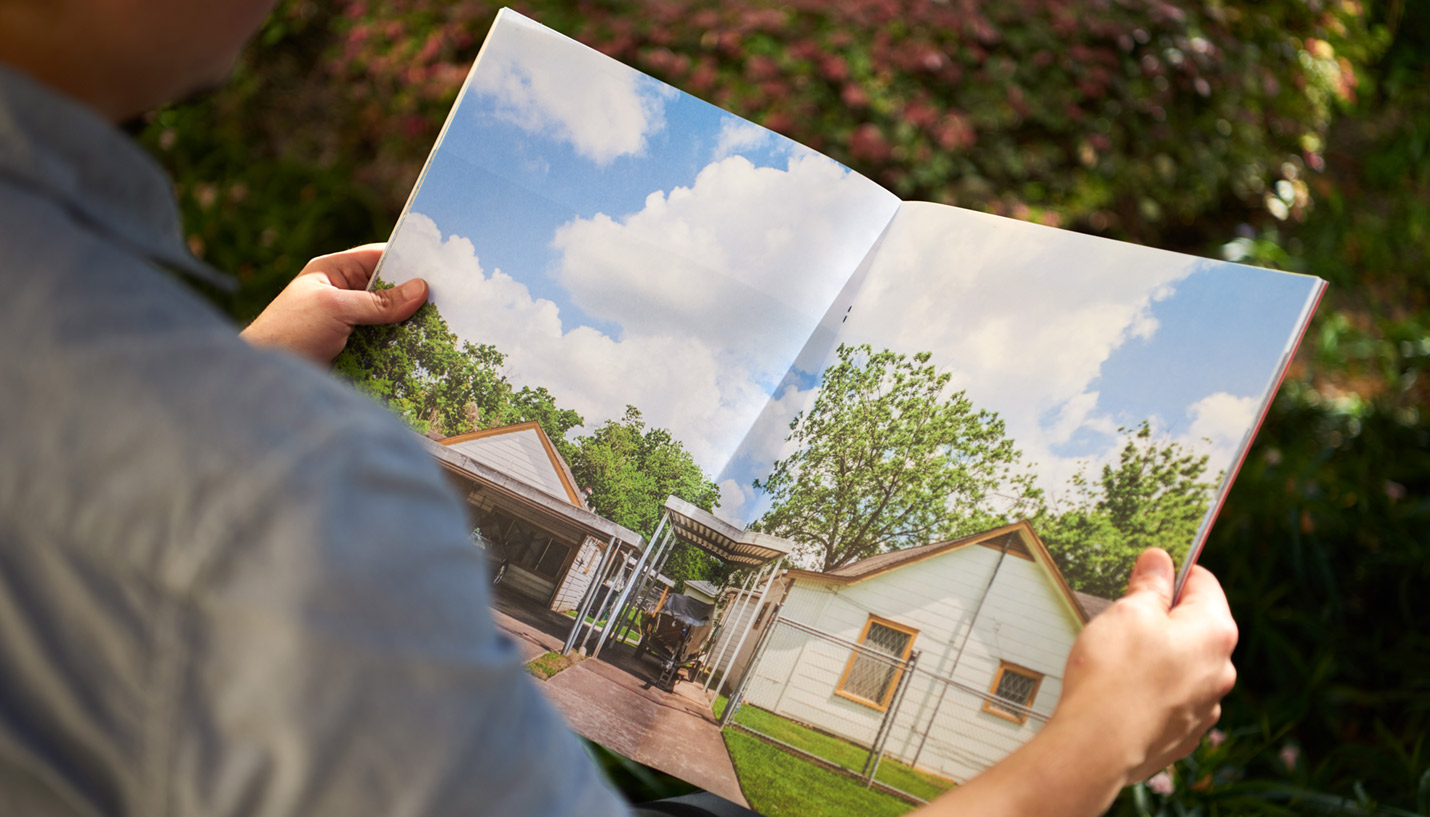100 Issues: Urban Design Then & Now
In 1982, Herman Ellis Dyal, FAIA, and several other like-minded colleagues conceived of a tabloid-size print publication that would thoughtfully examine the intersections of high design and civic engagement that shaped Houston. At that time, Houston was “the landing pad of the world’s star architects, the Dubai of the time” in the words of the publication’s parent organization Rice Design Alliance. Cite has since survived the savings and loan scandal, hurricanes and oil busts that threatened the city. Today it is not only one of the few architecture and design magazines dedicated to a single city but also is celebrating its 100th issue, with Herman serving as Guest Editor and Designer for it. His Page colleague, Julie Pizzo, was a Design Associate on this issue as well.
Cite is published quarterly but even more work than usual went into this special issue, which returns to the format of the early issues and limits the cover to black and white in an obvious nod to the inaugural one. The week before the final proofs were to go to print, then-Tropical Storm Harvey drifted over Houston – and stayed – dropping a record-breaking 50 inches of rain on the city in a five-day period. The resulting floods devastated parts of Houston, killing 36 people, leaving tens of thousands homeless and affecting an estimated 30% of the built infrastructure in the region.
The editorial staff huddled to ask themselves if the issue would hit the wrong note with readers. Then they realized it actually documented parts of the city that will never be the same again. Instead, they added a prominent “As we sent this to press” notation that acknowledged Harvey’s effect and explained the issue captured a “present tense” that has unexpectedly passed. It went on to say, “We know that many of our readers and contributors have been affected by this devastating event. Our thoughts are with you… We call on the entire Rice Design Alliance community to lead Houston’s recovery with optimism as we move into a more resilient, beautiful, and equitable future.”
A main feature of the issue is an extensive photo essay of 100 images taken in randomly selected locations around the city. The randomness was intentionally serious, resulting in documentation of ugliness, beauty, bustle, desertion, interesting, banal, dilapidated or shiny and new – showing Houston just as it was, and still is in a number of places. These images also served as the basis for a documented conversation among observers and as the subject of an essay in later pages of the issue.
Although no one foresaw the environment in which the 100th issue of Cite would be released, it actually feels relevant and as positive as the Houstonians determined to rebuild. To learn more about Cite or to subscribe, click here.
11/09/2017



